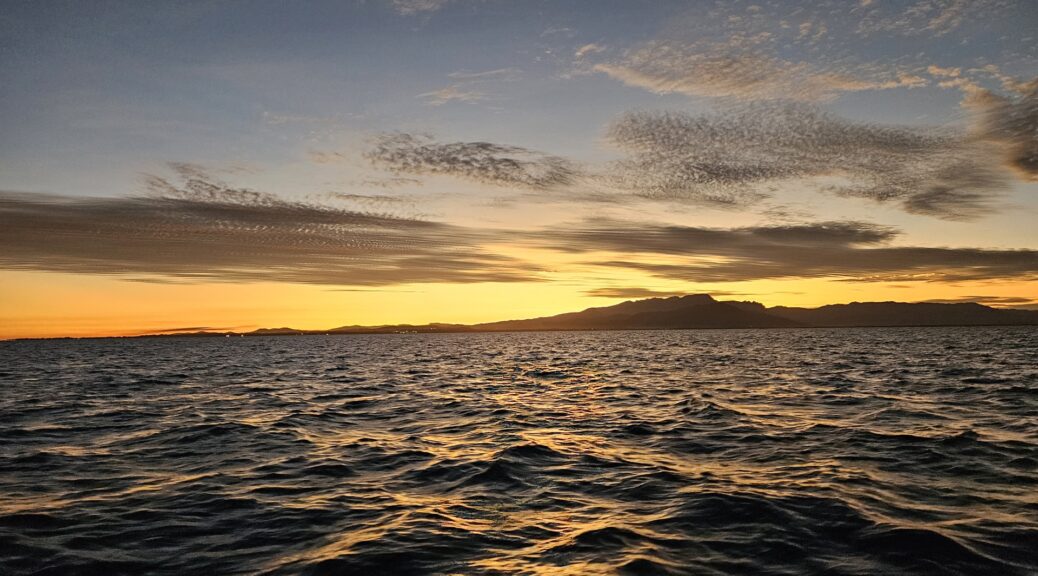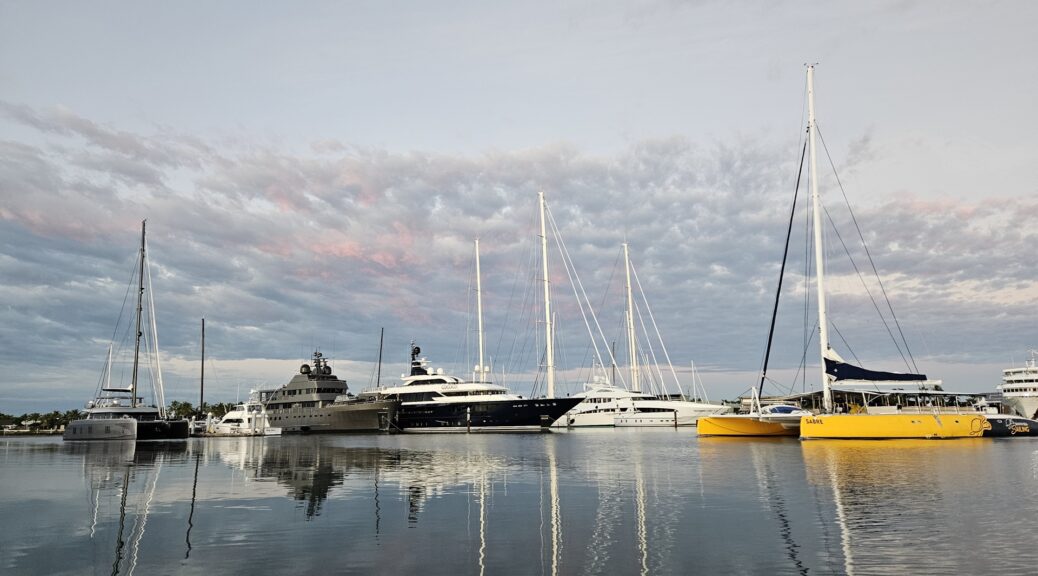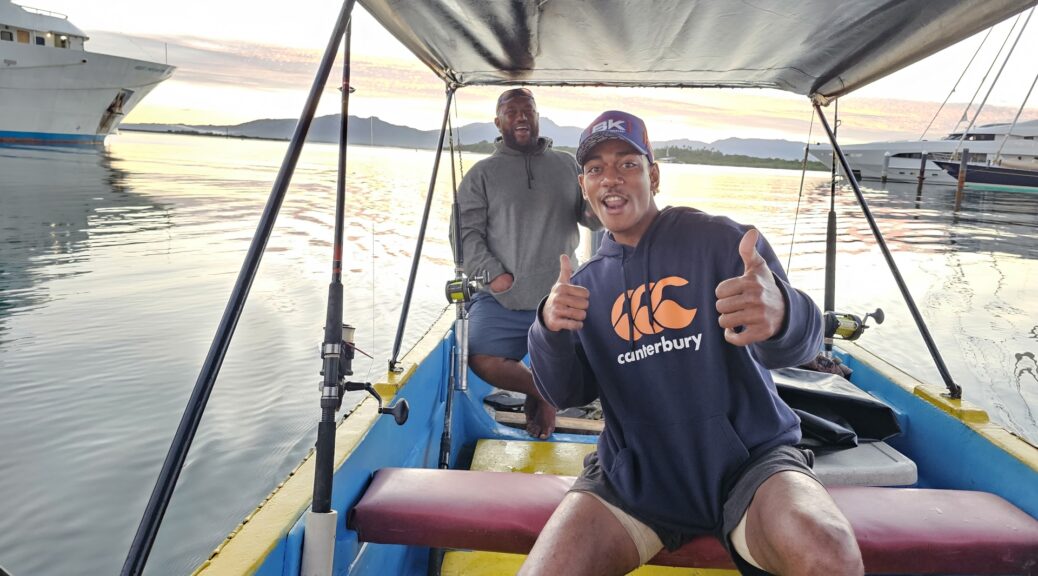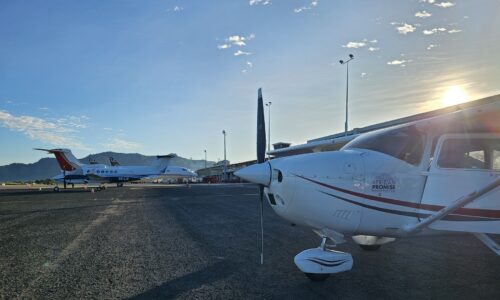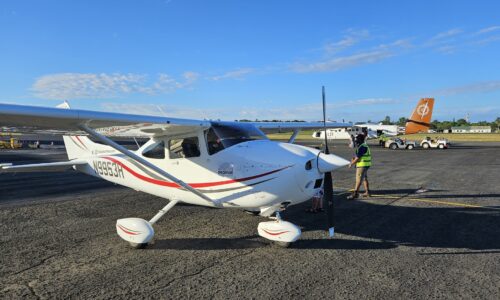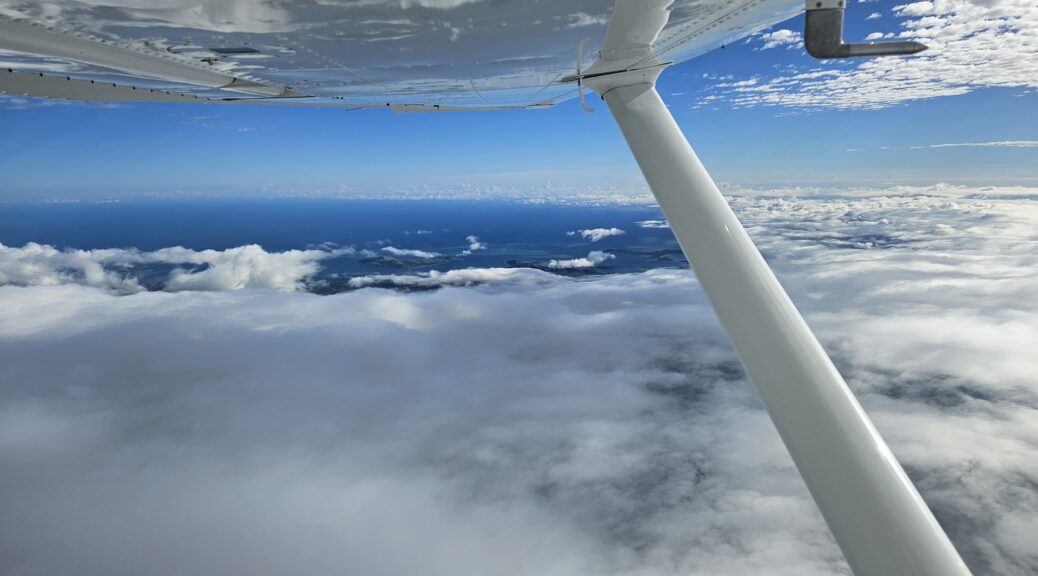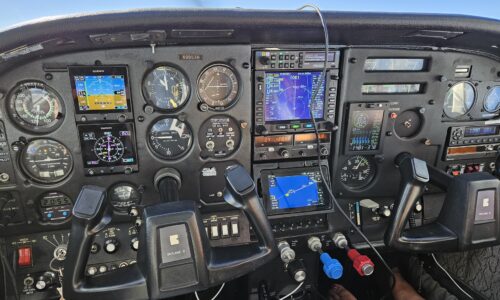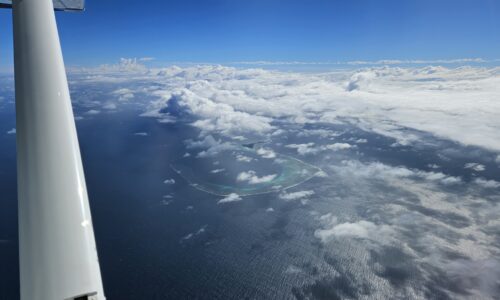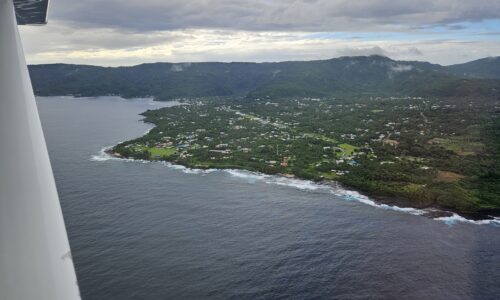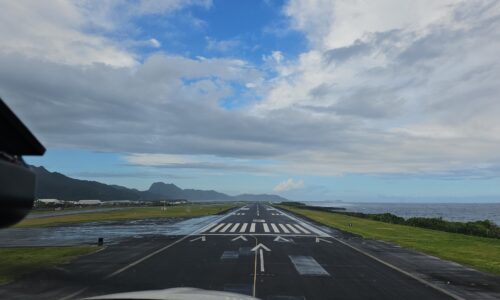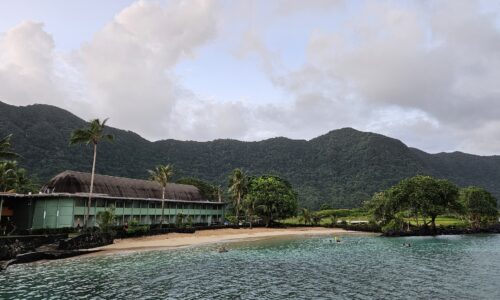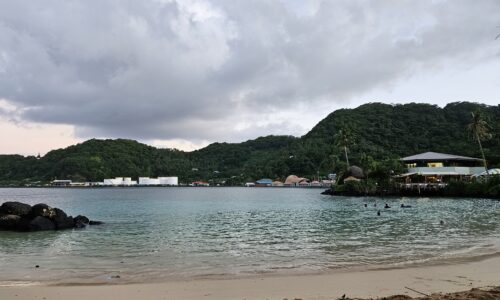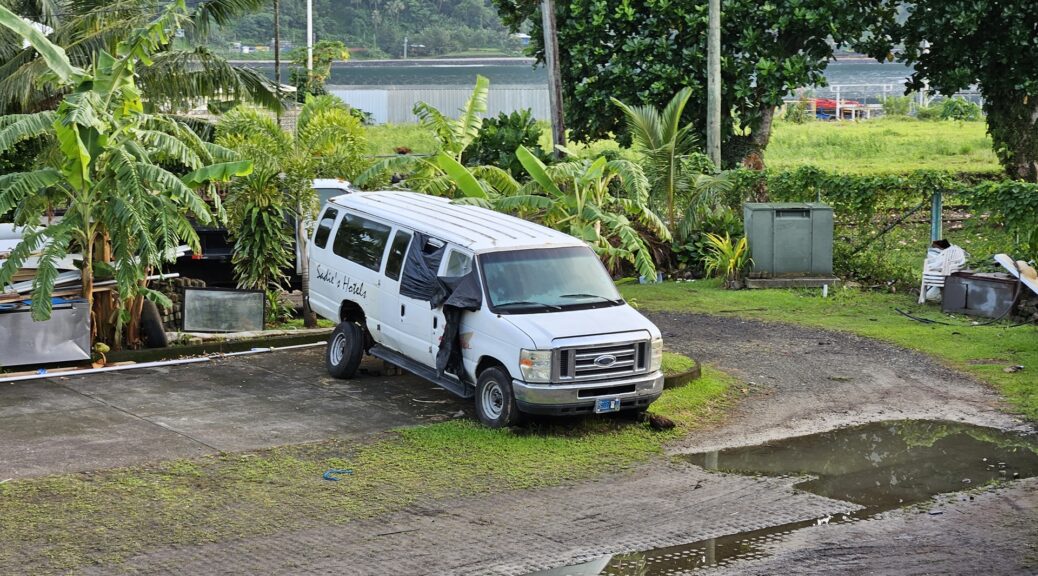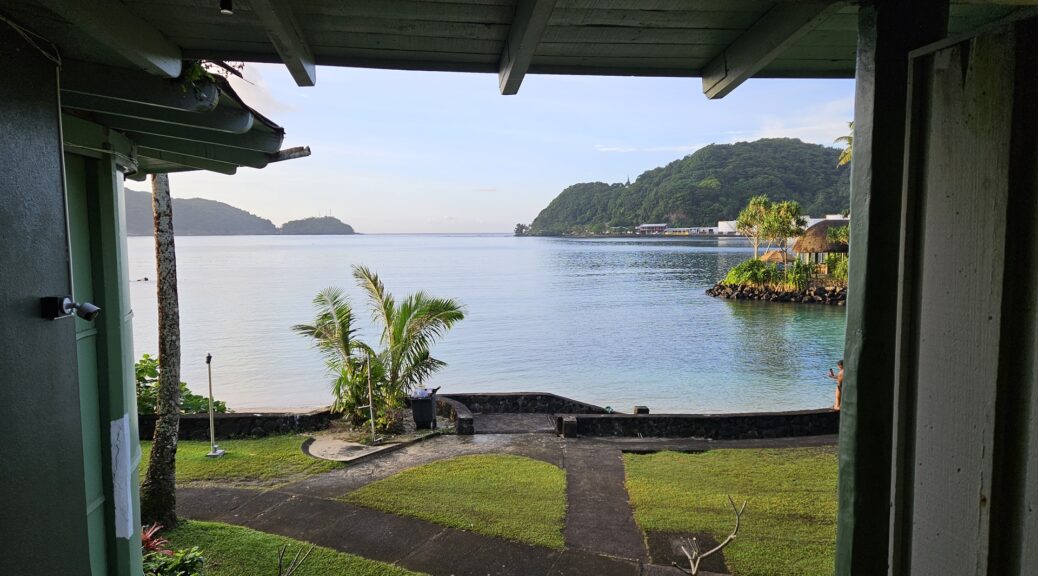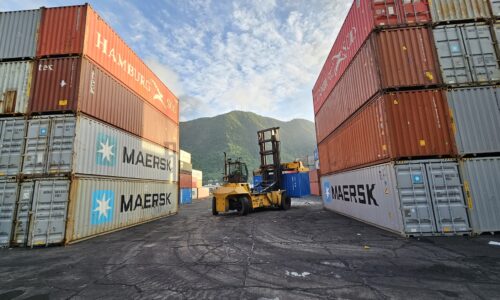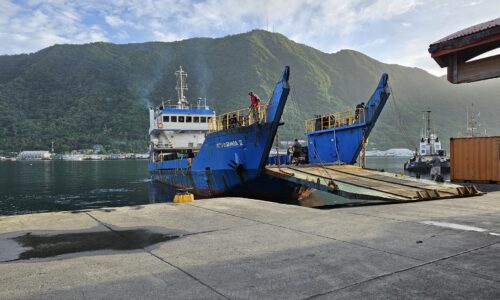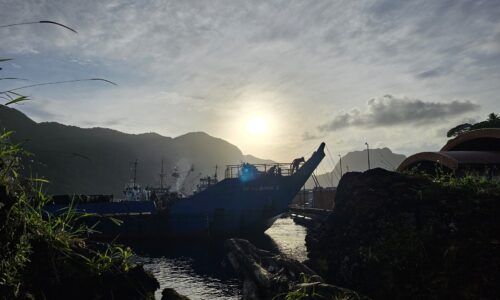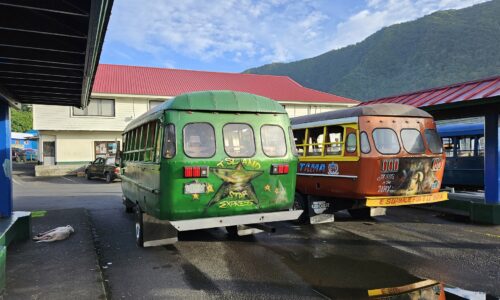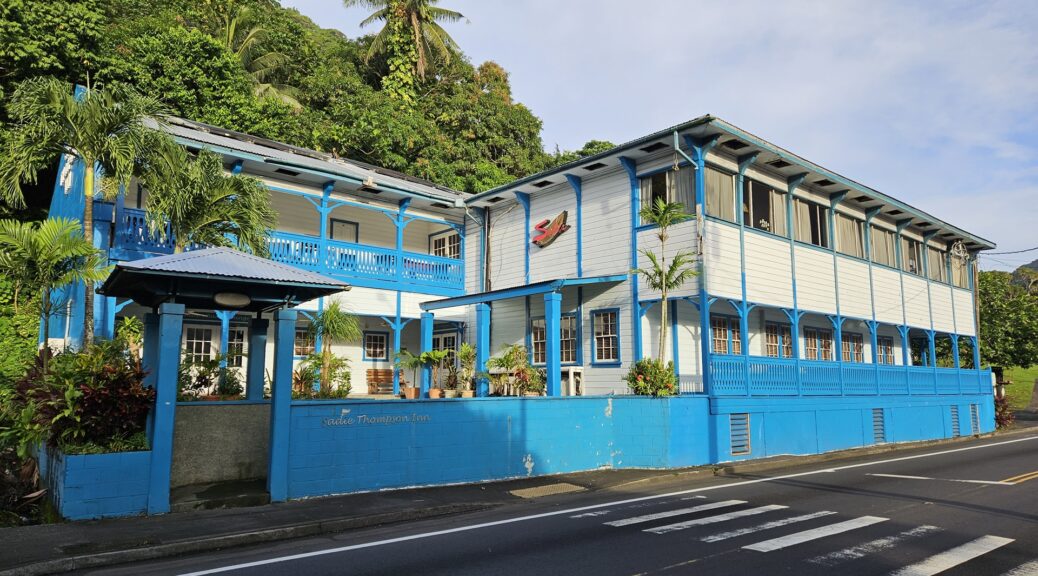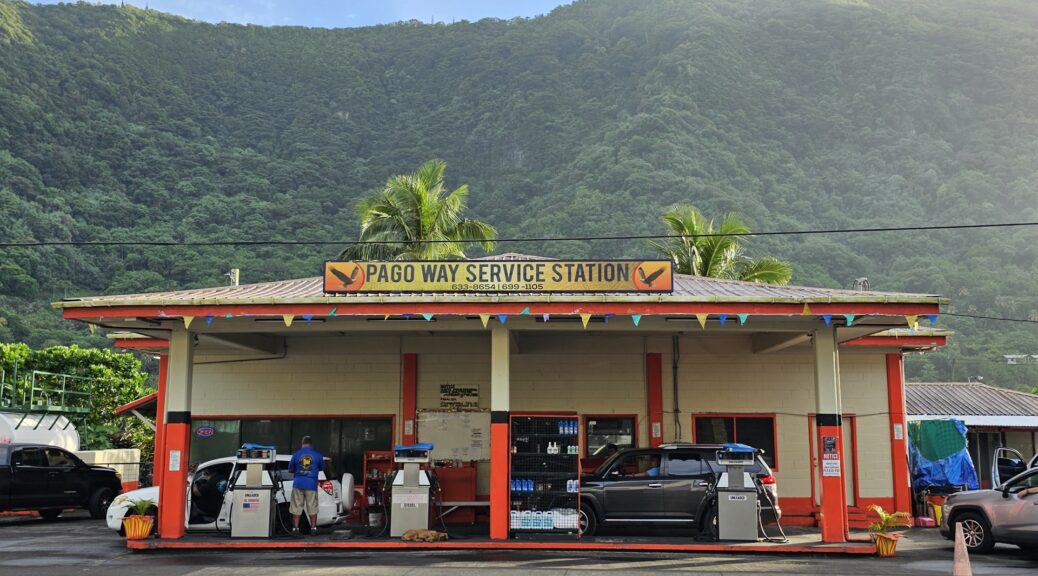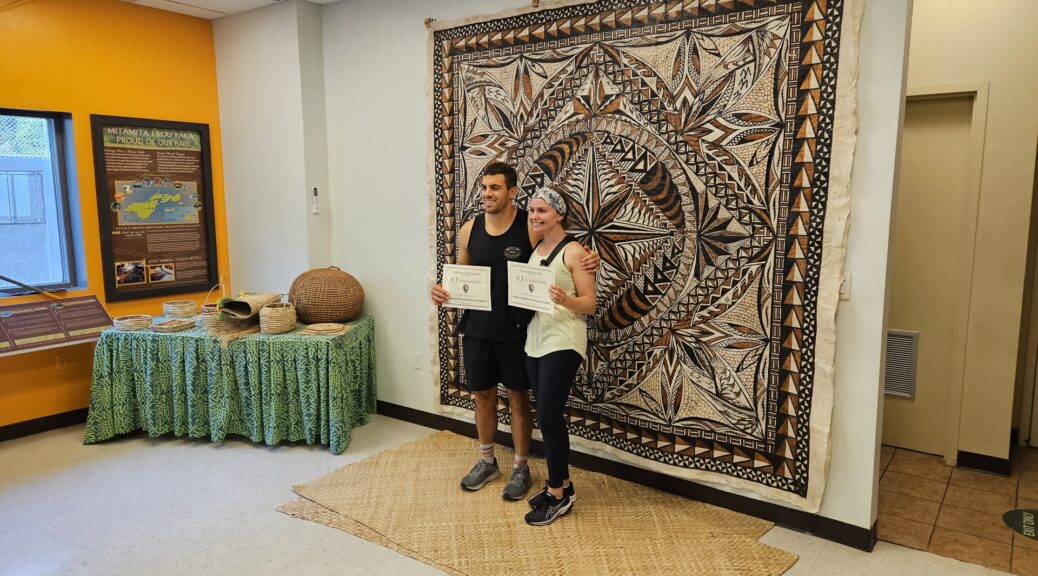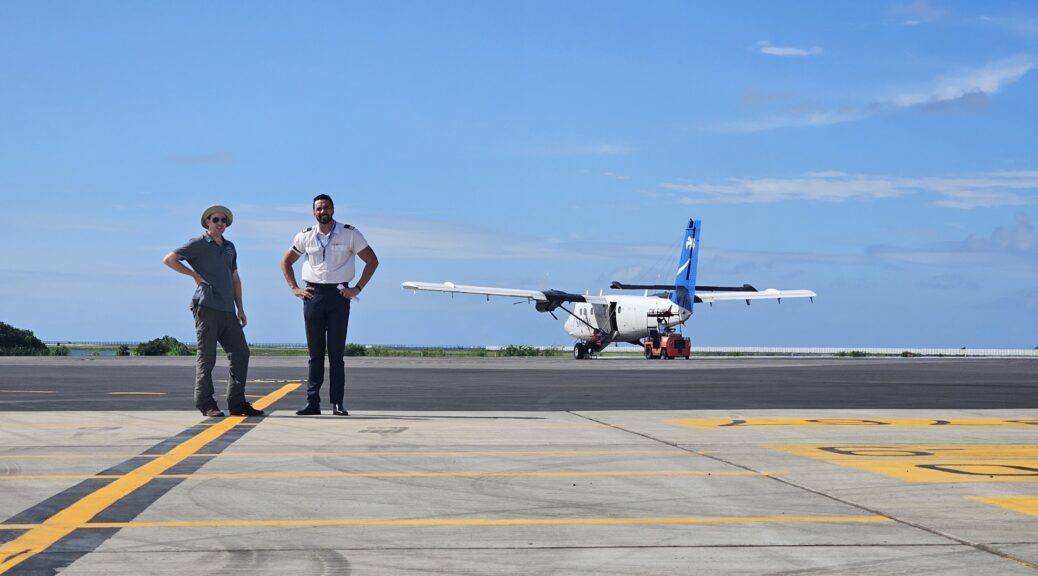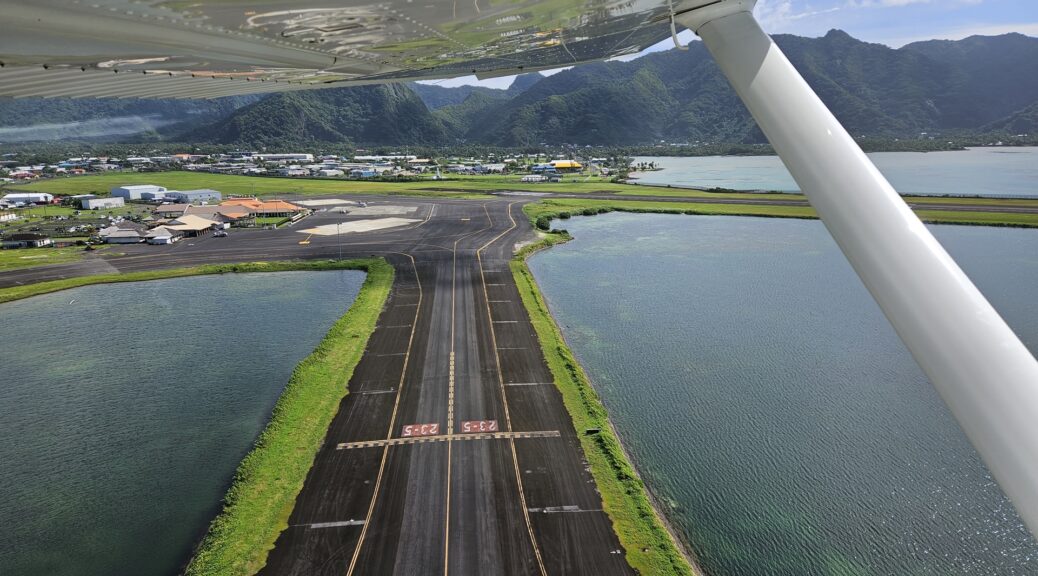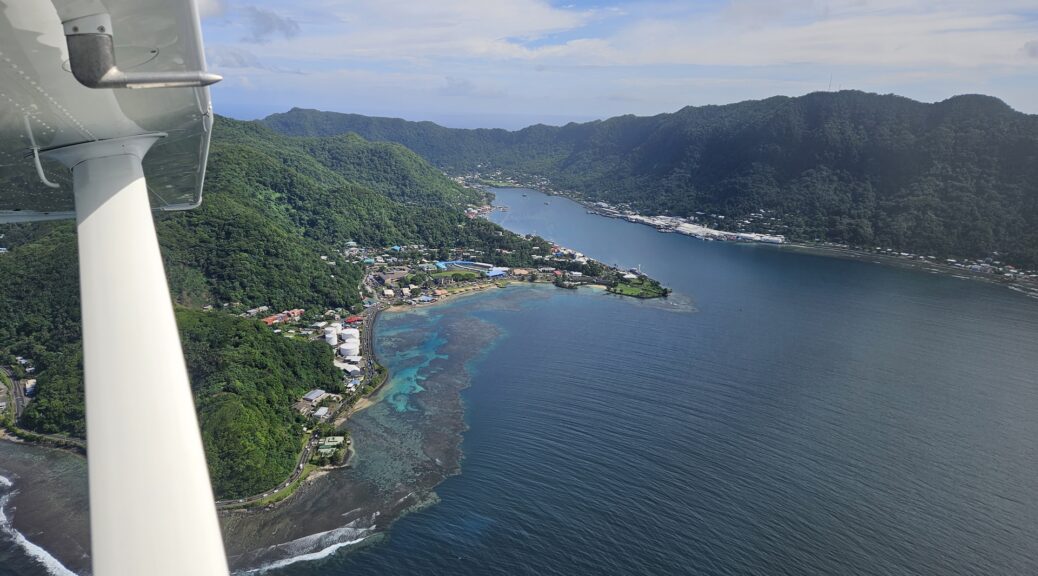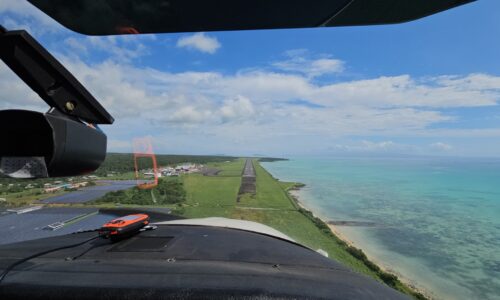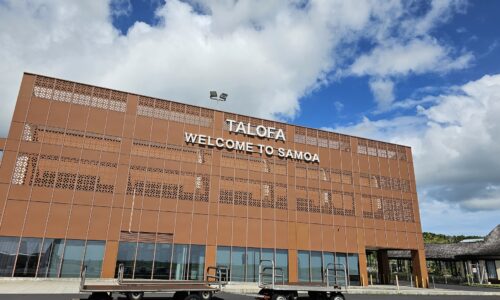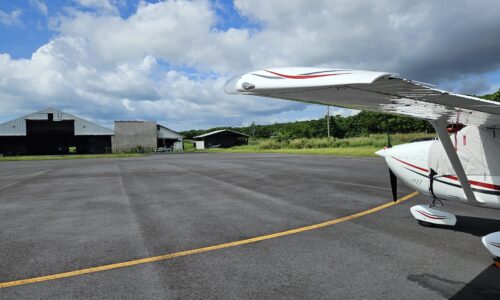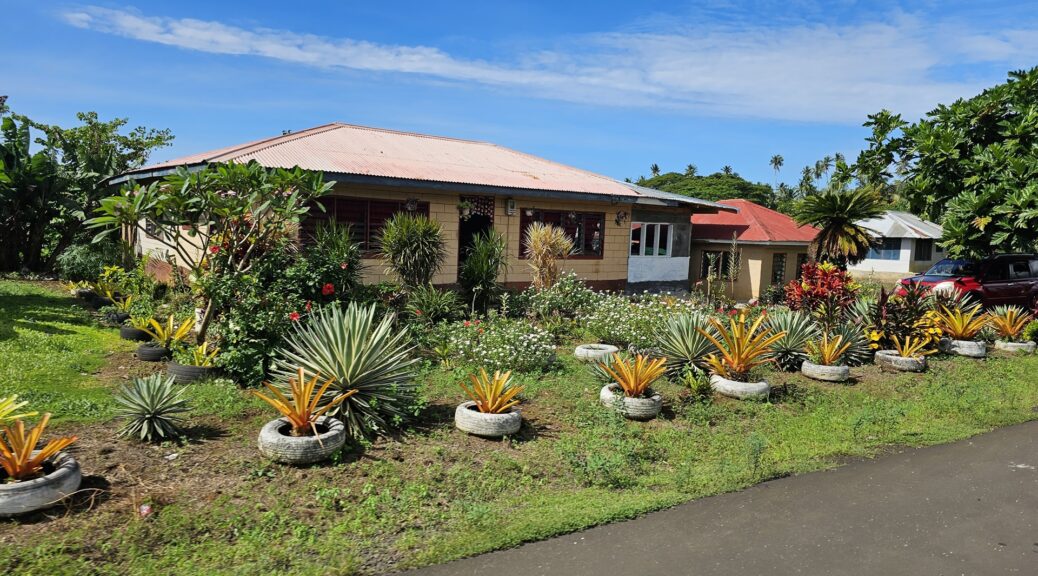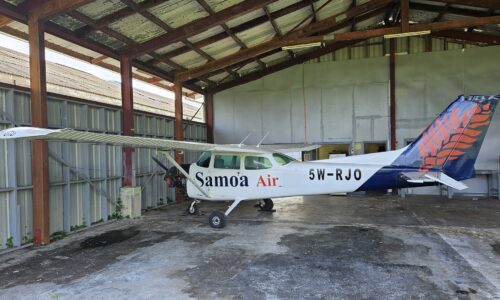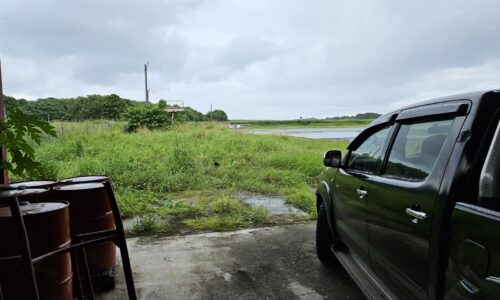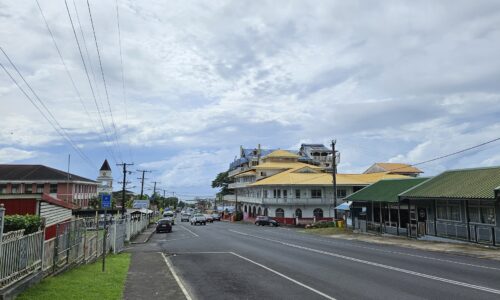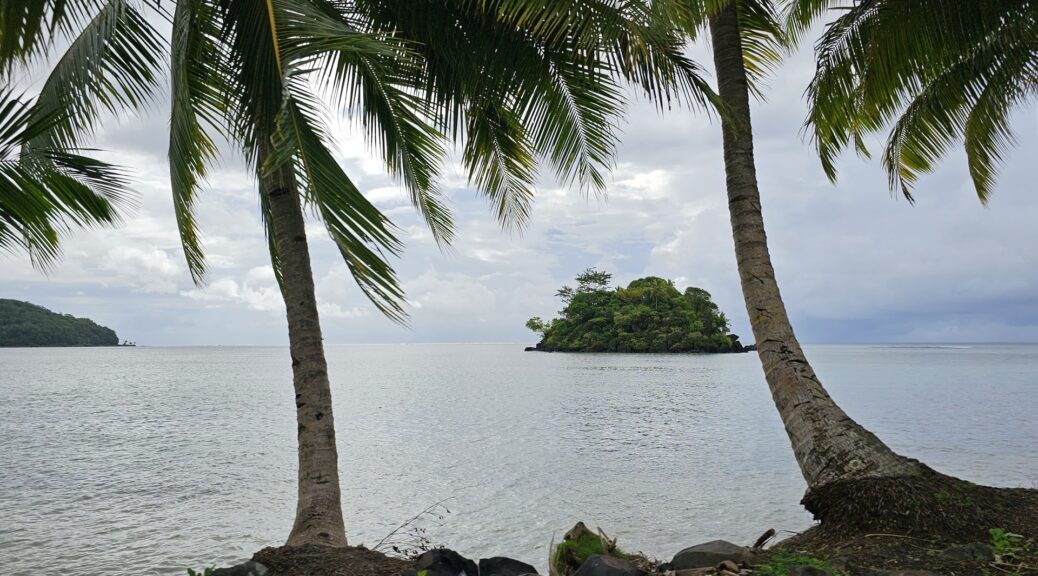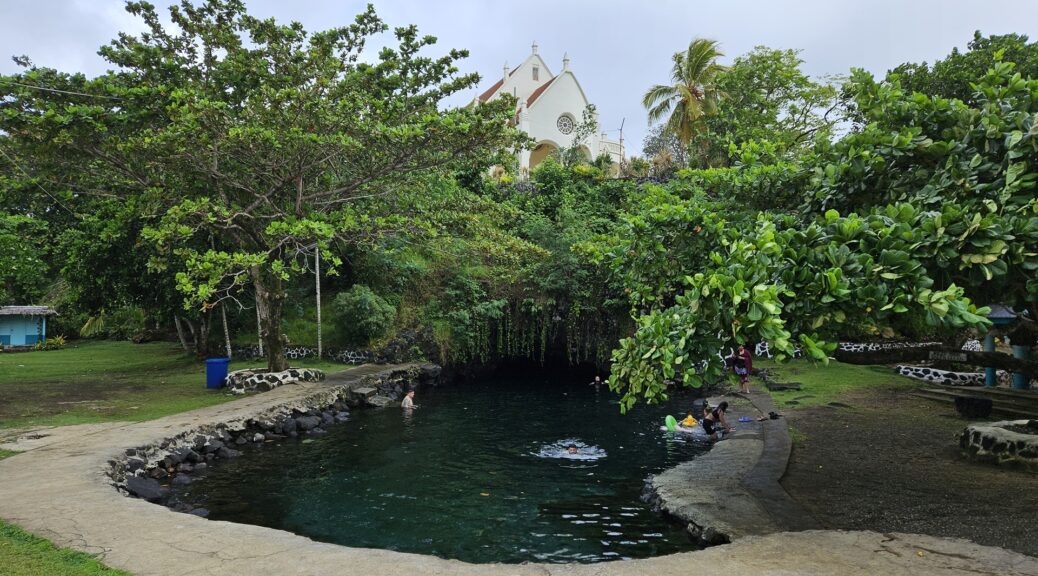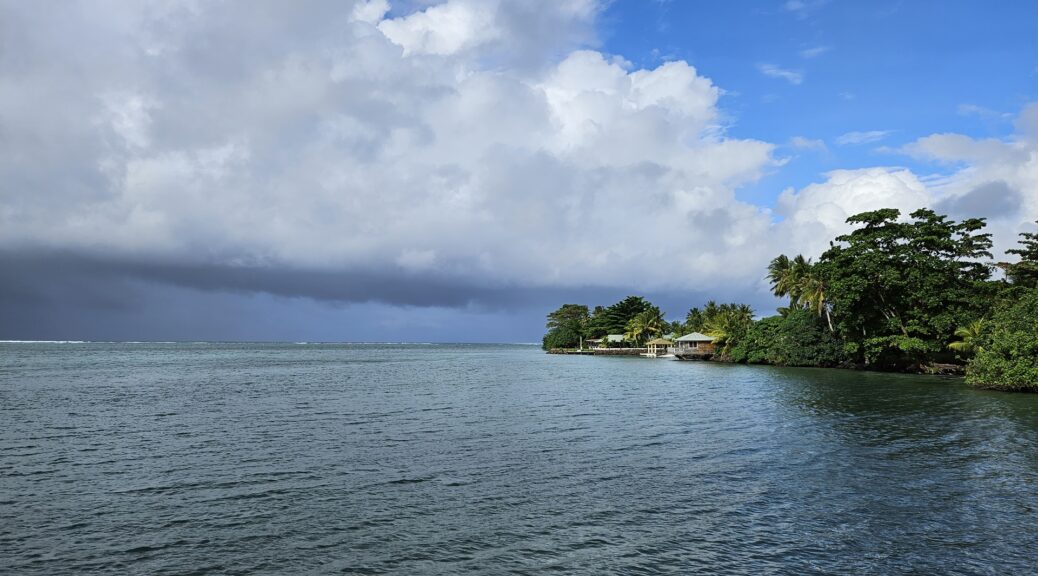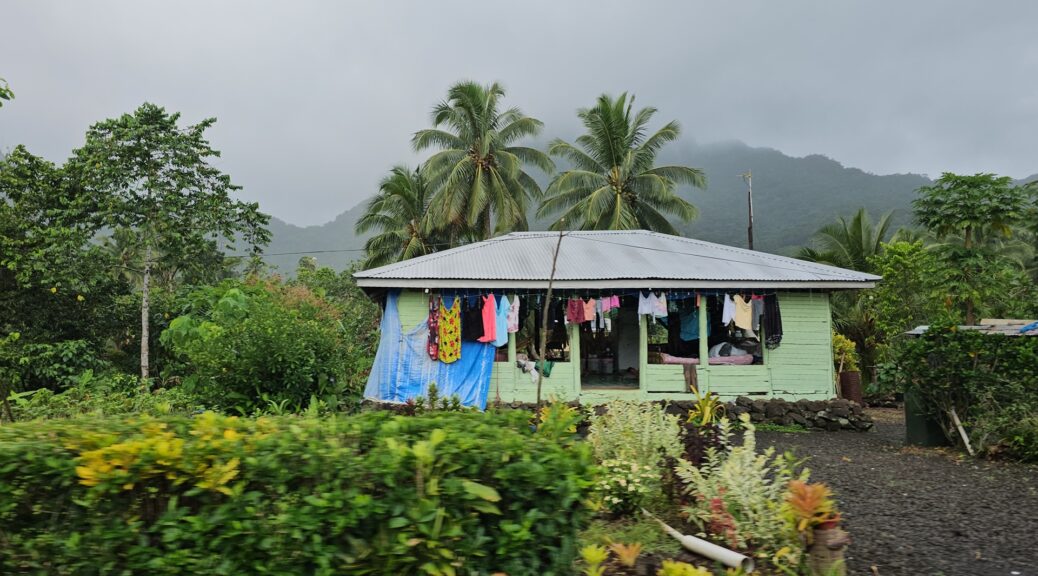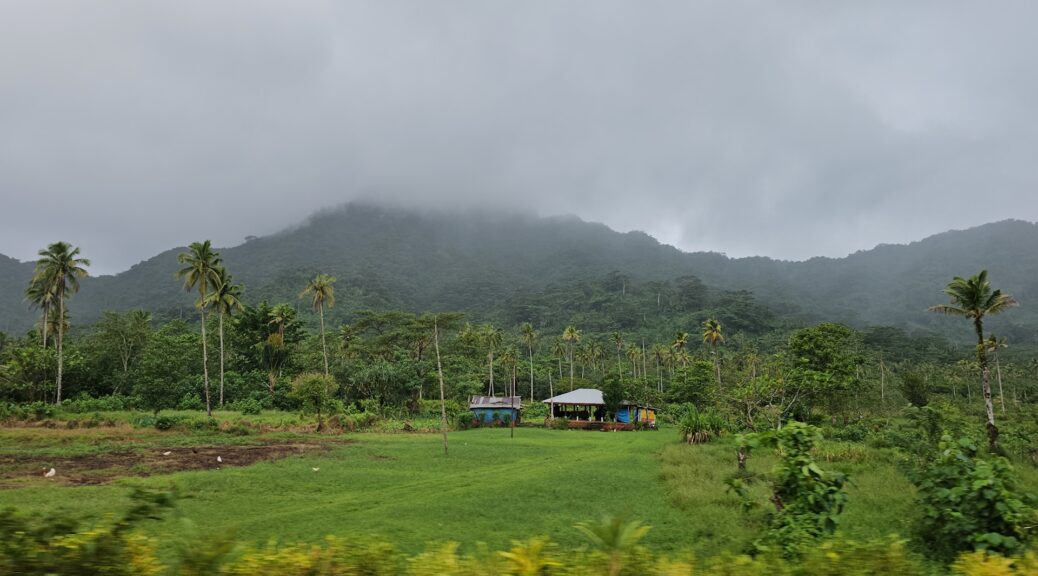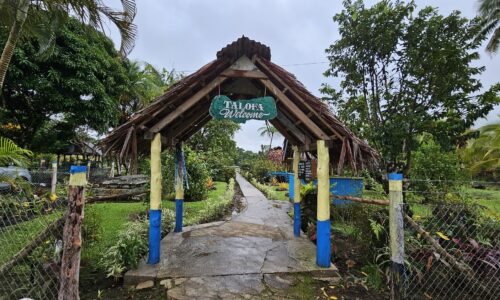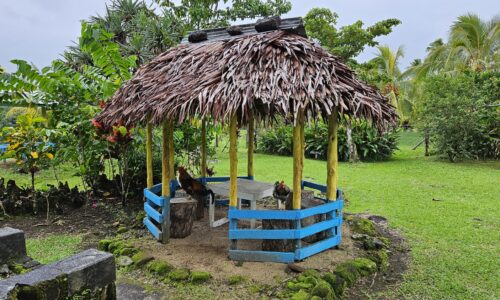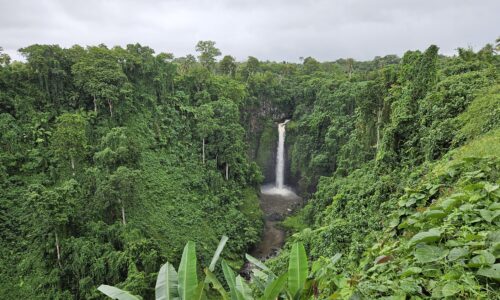Round the World – The Pacific, Part 7
The next morning we were collected by a water taxi before dawn, as the hotel shuttle boat didn’t start running until later. The sun wasn’t around yet to warm things up, and the breeze was chilly as we sped across the small waves back to the main island. The dawn was breaking as we pulled back into the marina at Denarau after a thirty minute ride. After grabbing some pastries for breakfast we were soon in a taxi headed back to the airport.
Davila and team met us shortly after arrival and escorted us through immigration and customs back to the aircraft. After a thorough pre-flight we were ready to get going. It took a few minutes for air traffic control to get our clearance activated but we were soon given the go-ahead to taxi to point H. Tower cleared us to backtrack on runway 27, with an initial climb to 1,500ft on runway heading.
Planey was a little sluggish with his heavy fuel load but the extra power of the upgraded engine had us in the air quickly and climbing out to the west of the airport before turning on course. Tower switched us to Nadi Control who re-cleared us up to 9,000ft on course. We climbed at 110kts true air speed, gaining just a few hundred feet a minute with the 170+ gallons of fuel on board.
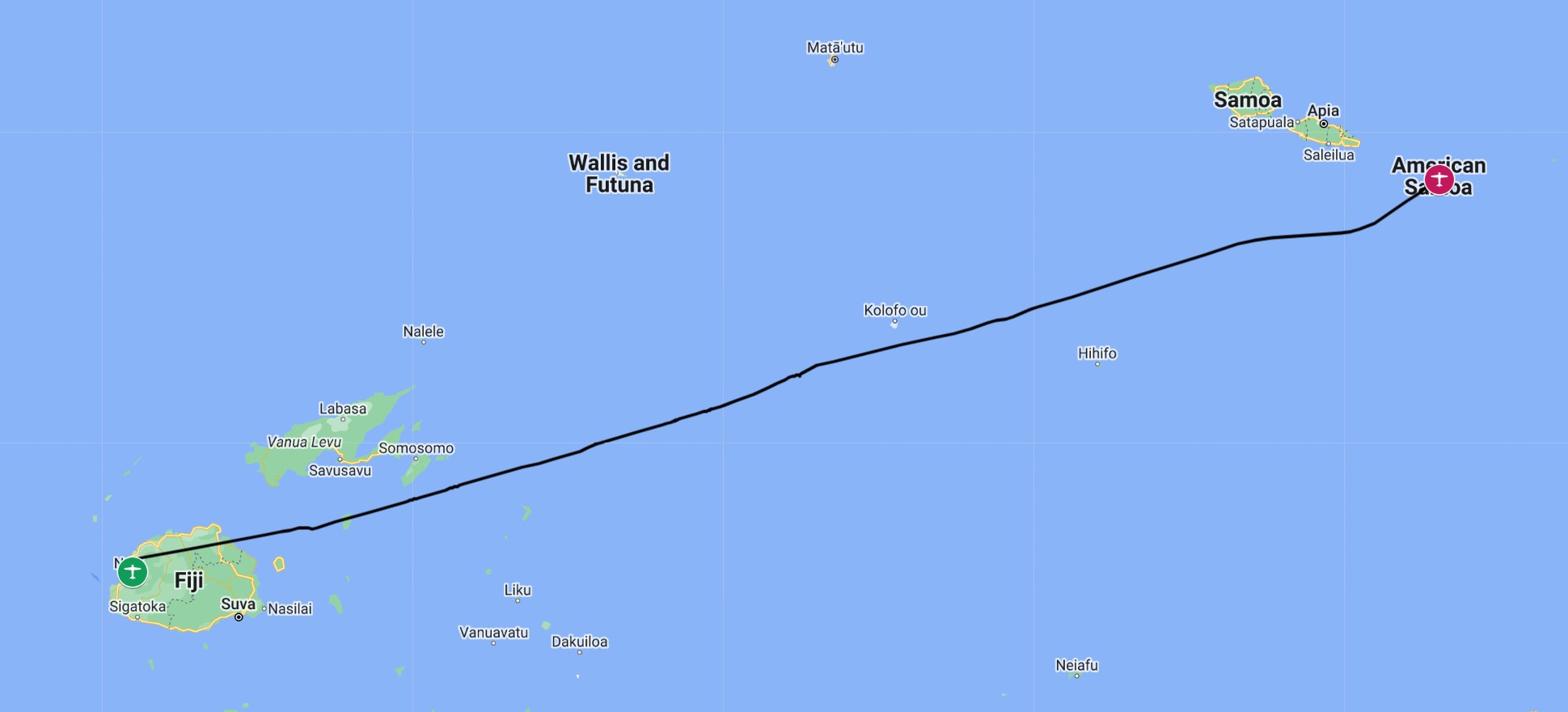
Early on in the flight we passed a major milestone; we crossed 180 degrees of longitude and returned to the Western Hemisphere. This put us exactly half way around the world from the UK; flying through there back in 2019 seemed like a lifetime ago. The initial light tailwind shifted around into a moderate headwind which slowed us down a little, but the comfortable fuel reserves which I had planned in meant that this was nothing more than a minor inconvenience.
One thinks of the Pacific as a vast empty expanse, but in this area at least nothing could be further from the truth. Tiny islands and atolls dotted the ocean, providing a welcome change of scenery as we cruised past them. A particularly impressive example was the ring-shaped Niuafo’ou island (translation; “Many coconuts”), part of the kingdom of Tonga. This volcanic island is a dramatic sight, with a flooded caldera on the interior with walls rising 120 meters above the water. The volcano is still active, with regular eruptions over the last 200 years. A little over 400 people live there, a number which has been slowly decreasing in recent decades.
Closer to American Samoa we passed another major milestone; the international date line. This meant that we took off on Tuesday, and landed on Monday. This was the first of three crossings we’d make of the date line, and a spreadsheet to keep track of arrival and departure days had been a key tool in making the correct accommodation reservations and handling requests!
We kept in touch with Nadi Radio on the HF as far as the “BODER” intersection, before switching over to talk to Faleolo approach out of independent Samoa. There were some large storm clouds sitting on the direct route between us and the airport at Pago Pago so we made a wide loop out to the south to get around them. We cancelled our IFR flight plan with Faleolo as we descended through 2,000ft before continuing in to land straight in to the northeast.
There had been no other traffic airborne around American Samoa but there was a little activity on the ground; a turboprop Aero-Commander and a local freight jet were moving around. A few individuals from Pritchard Airport Services met us on arrival including the owner himself. They took this opportunity to inform us that they had in fact found the Avgas after all (this turned out not to be entirely true). I did some quick re-planning and elected to accept one barrel of fuel, but to keep the new schedule with a stop in independent Samoa for another barrel. Transit through the little airport was very quick and simple and we were soon in a taxi on the way to the hotel; “Sadie’s by the Sea”.
Jason, the owner of Pritchard’s, had winced a little when we mentioned that we were staying at Sadie’s and the reasons for this became apparent fairly soon after our arrival there. It could charitably be described as “tired”, with poorly cleaned and maintained rooms and bags of trash laying around the hallway. Walls were thin, and the rooms were noisy. The advertised Wi-Fi didn’t seem to work at all, which was frustrating for flight planning. I was glad that we would be spending one night instead of the originally planned three and quickly changed our planned departure for the next day from 2pm to 11am. We quickly regrouped and headed to the restaurant which was significantly better, with decent internet access and simple but tasty food. They even made a good Pina Colada.
We only had to fly 80 miles today so there was no need to depart early. We still made an early exit from the hotel however, glad to see the back of it, and walked the thirty minutes to the visitor center for the American Samoa National Park. Along the way we passed the port and fishery, as well as a monument commemorating the deed of cession whereby American Samoa began the process of joining the United States in 1900. As we walked we were passed by an ever-increasing number of decorated pick-up trucks and other vehicles, most with people sitting in the back in formal clothing, and some with a young person on a makeshift throne. We later discovered that today was high school graduation day and that to arrive at graduation in such a fashion was a local tradition.
The National Park Visitor Center is some distance from the park itself, presumably to make it more accessible. The only person there when we arrived was the ranger on duty who was very welcoming, giving us each an American Samoa 25c coin and answering all of our questions about the park and islands. Not long after us a couple, Tessa and Anthony, arrived; they were here to visit their final National Park. This was number 63 of 63.
The ranger was kind enough to call a taxi to take us back towards the airport once we had exhausted the exhibits in the visitor center. We had it drop us at the McDonald’s near the terminal; Juvy was keen to try out the American-Samoa-specific spam related breakfast items. To the amusement of the man behind the counter I made do with a McFlurry – “Oh ho, ice-cream for breakfast!”.
The walk from McDonald’s to the terminal was short and we were spotted by two of the Pritchard employees as we approached; they came and escorted us through the airport and out to the apron where they had a barrel of avgas on a trailer next to the airport. Promising. The drum was not sealed. Less promising. The drum was only half full. Oh dear.
After emptying the 18 gallons that was actually in the drum the Pritchard employees disappeared, claiming that they had another barrel somewhere. Time ticked on and we hung around waiting. The pilot of an Samoa Airways twin otter came over to say hello, curious about what a Cessna 182 was doing all the way out here. Tall, handsome and rugged, Juvy immediately dubbed him “Pilot Daddy”, although not to his face. He offered me plenty of good advice about flying over to Faleolo such as recommended altitudes and when to expect to achieve radio contact with the approach controller. After an hour the handlers finally returned and we uploaded the remainder of our fuel before starting up and heading on our way.
There is no air traffic control at Pago Pago so we self-announced as we taxied out and departed. I flew east along the shore gaining altitude before turning in along the inlet which houses Sadie’s by the Sea, having enough altitude now to clear the islands’ central hills. We shadowed the island’s north shore taking in the views of the National Park before turning a little to head towards the northern side of Samoa’s more easterly island.
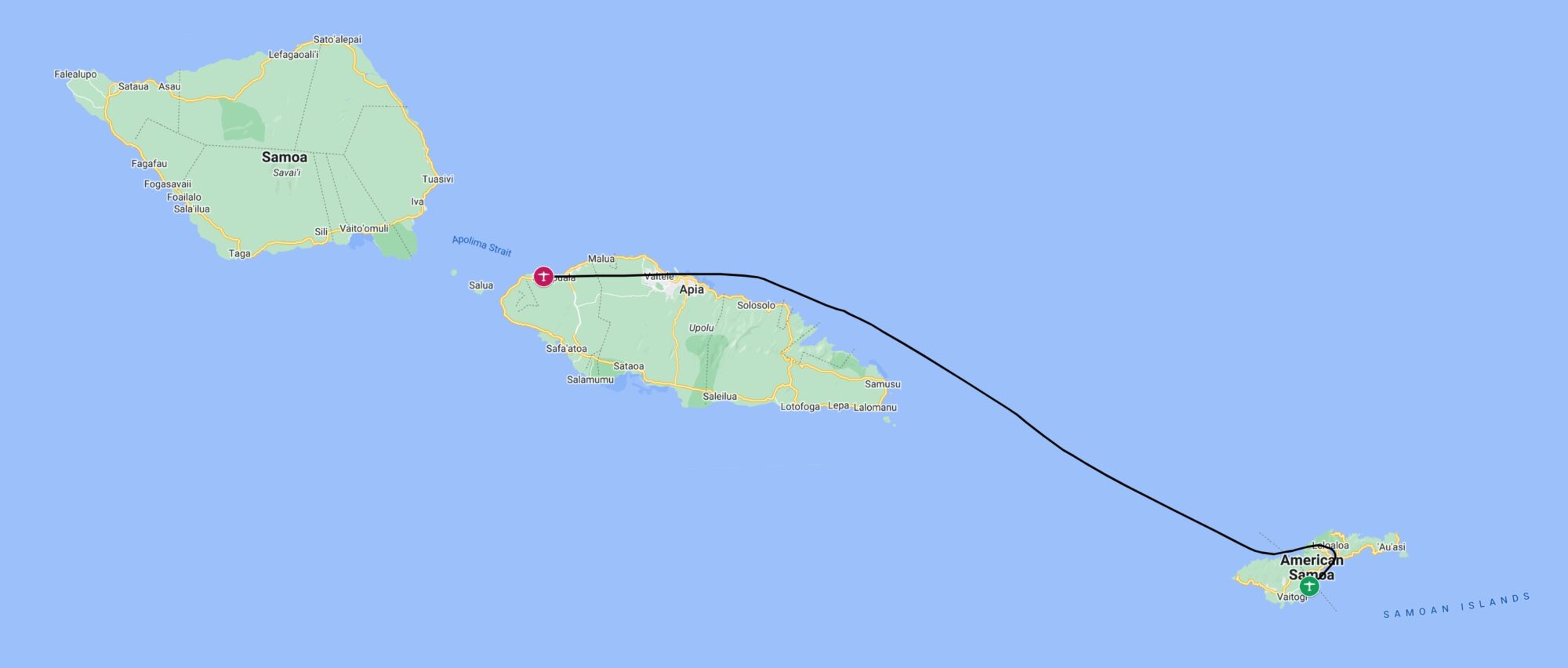
Half way between the islands we passed from Tuesday into Wednesday, the second date line crossing. As Pilot Daddy had said, it wasn’t until we were coming alongside the island that we managed to get in contact with the approach controller. Samoa Airways relayed a couple of messages for us before that. We cruised along the shoreline at 2,500ft, passing over the capital city of Apia before being cleared to land straight in on the airport’s only runway. Tower directed us to the apron where our handler, Sabu, was waiting to meet us.
Sabu was efficient and organised and quickly led us into the main terminal where our passports were processed by a smiling Samoan lady who welcomed us to the country. This took just a few minutes, and Sabu then led us back to the aircraft and gave us directions for how to taxi to his hangar. A customs representative had followed us out to inspect the aircraft; after giving it a cursory glance he indicated that all was OK. I started up and called tower for clearance to enter the runway and head down to the hangars; despite there only being one hangar tower didn’t seem to understand where we wanted to go and had us hold until he had called our handler to figure things out.
Tower eventually gave us our taxi clearance and we headed down to park. I secured Planey under his cover, important given the amount of rain in this part of the world and his tendency to leak a little, and Sabu gave us a lift in his pick-up truck to the car rental agencies. Despite having a confirmed reservation the Budget people did not have any cars available for us but the lady behind the desk was eventually able to source one from an independent vendor, who would drop it off to us at the hotel that evening. In the meantime we took a taxi into the city and our hotel.
This hotel was the complete opposite of Sadie’s; clean, comfortable and quiet. The internet connectivity was even excellent, although a check of my email confirmed that the fuelers on Kiritimati were continuing to maintain radio silence. After a couple of hours relaxing our rental car showed up and we took care of the paperwork which included the issuance of a Samoan driver licence; this simply involved the payment of some money and the copying of my UK licence details onto a sheet of paper.
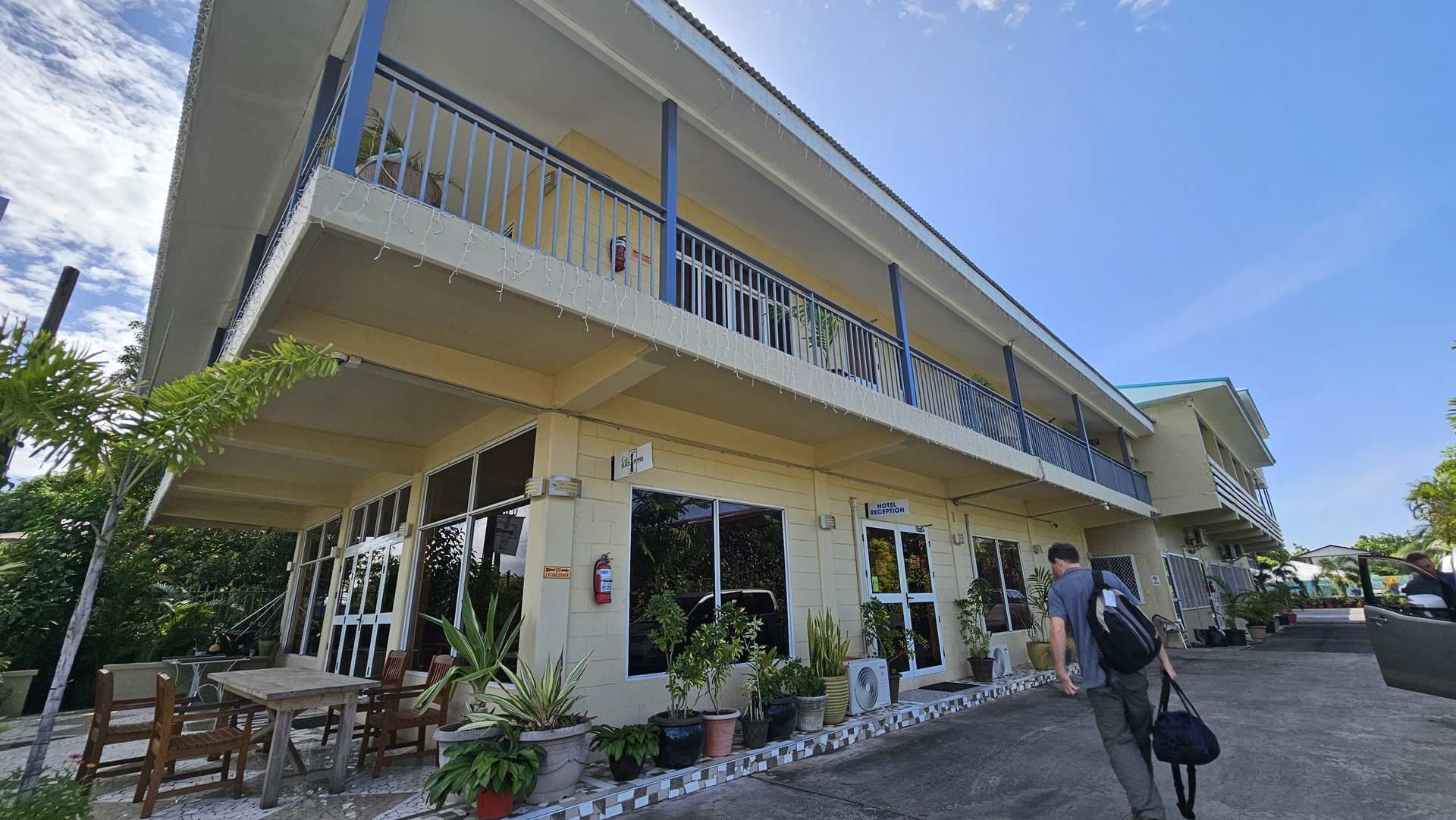
We left the car at the hotel and walked to a well-reviewed local restaurant named “Paddles”. Owned by the son of an Italian immigrant and a local lady, their food was a mixture of the two cuisines and was delicious. A bonus was the fact that a friendly restaurant cat made the rounds greeting patrons from time to time. One unobservant arriving customer did stand on the cat which led to some yowling from both parties, but no permanent damage appeared to be done to either of them.
I met Sabu the next morning at the airport to refuel Planey. We obtained a temporary security pass for me and drove up to Sabu’s hangar where a handful of new, sealed drums of avgas were stored. We rolled one of them out to Planey and unpacked the electric transfer pump. It was a good thing that we hadn’t tried to refuel on departure as Sabu had originally suggested because it took a good thirty minutes to get the pump working and transfer the fuel.
Sabu dropped me back at the terminal where I had left the rental car, and said his goodbyes. Juvy and I headed off to explore the island, stopping first at the hospital to acquire COVID tests as required by the probably-out-of-date Kiritimati arrival procedures. There was a slight delay because the office where the COVID tests were done was locked and none of the medical staff had the key; when we arrived they were attempting to open the door using a spoon. 20 minutes later we left with negative tests in hand, as the doctor strolled out behind us, swung his leg over a sports bike, and roared off.
We drove east of the city along the coast, stopping every now and then to take in the views, as well as some photographs. Occasional rain showers rolled through and the mountains at our backs were shrouded in mist. Every now and then we came across children swimming or surfing by the shore.
A short distance along the road we arrived at the Piula Cave Pool. Located within the grounds of the Piula Theological College this pool is formed by a freshwater spring that flows out of a large cave. The pool is connected to the sea below the water level and rises and falls with the tide; this also means that some marine life can come and go. A Samoan family, now living in New Zealand, were trying to coax out a large eel which was ensconced under rocks at one end.
After drying off and enjoying the views along the shore we hopped back into the car and headed uphill into the interior. The road took us past handfuls of small homes, many with colourful lines of clothes hanging drying outside. We slowly wound our way along the road up into the mountains, soon being surrounded by mist as well as the occasional curious cow gazing at us from the side of the road as we passed.
Samoa’s interior is abundant with waterfalls, fed by the rainy climate and funneled by the dramatic hills and valleys. We stopped to view a couple of these, the most impressive of which was the Sopoaga waterfall. 32m high, this fall is surrounded by lush rainforest, making it particularly picturesque.
That evening we visited Paddles restaurant once again. Heavy rain showers were passing through at regular intervals so we drove this time instead of walking. The food had been so good the first time around that we were keen to return and sample more items from the menu – as well as see the friendly cat!
Click here to read the next part of the story.
